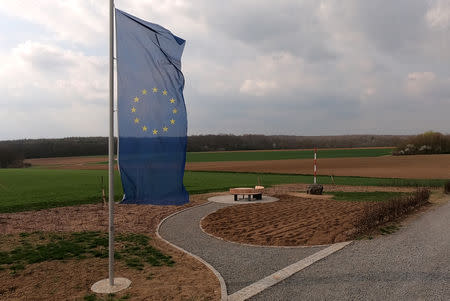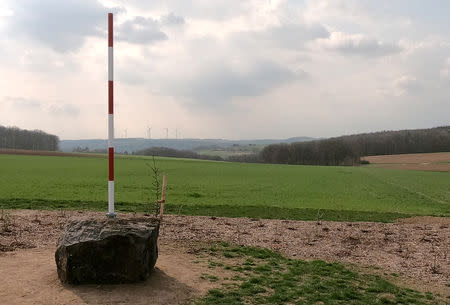German village could become EU's geographic midpoint post-Brexit
BERLIN (Reuters) - With the clock ticking down to Brexit, a tiny German village is preparing to take center stage as it becomes the new geographical center of the European Union when Britain leaves the bloc. It takes about an hour to drive the 55 kilometers from the current midpoint, in the municipality of Westerngrund, in southern Germany, to Gadheim. A sign proudly reading the "future center of the EU" already greets visitors outside the hamlet. On a nondescript piece of farmland, a pole is ready and waiting to hoist the EU flag. For Westerngrund, it will be a sad day when it waves goodbye to the title it gained when Croatia joined the EU in 2013. The exact spot is currently marked with a plaque, a map, and the EU flag, while multiple signs highlight Westerngrund's claim to fame. While the geographical center of the EU has moved slightly at various times, it has remained in Germany since the European Union expanded from 15 to 25 countries in 2004. Gadheim is too small to have its own mayor, and falls under the jurisdiction of the mayor of nearby Veitshoechheim, Juergen Goetz. He hopes the new title could put the village firmly on the map. "Of course we are counting on additional tourists coming to the region and in particular to Gadheim," he told Reuters. Local residents are getting excited too, with one even urging Goetz to make Theresa May an honorary citizen of Gadheim. "That's clearly a bit difficult. Of course Gadheim has a reason to celebrate, but I think that for Europe as a whole it won't be a good day," he said. (Reporting by Katie Stephens; Editing by Alexandra Hudson)


